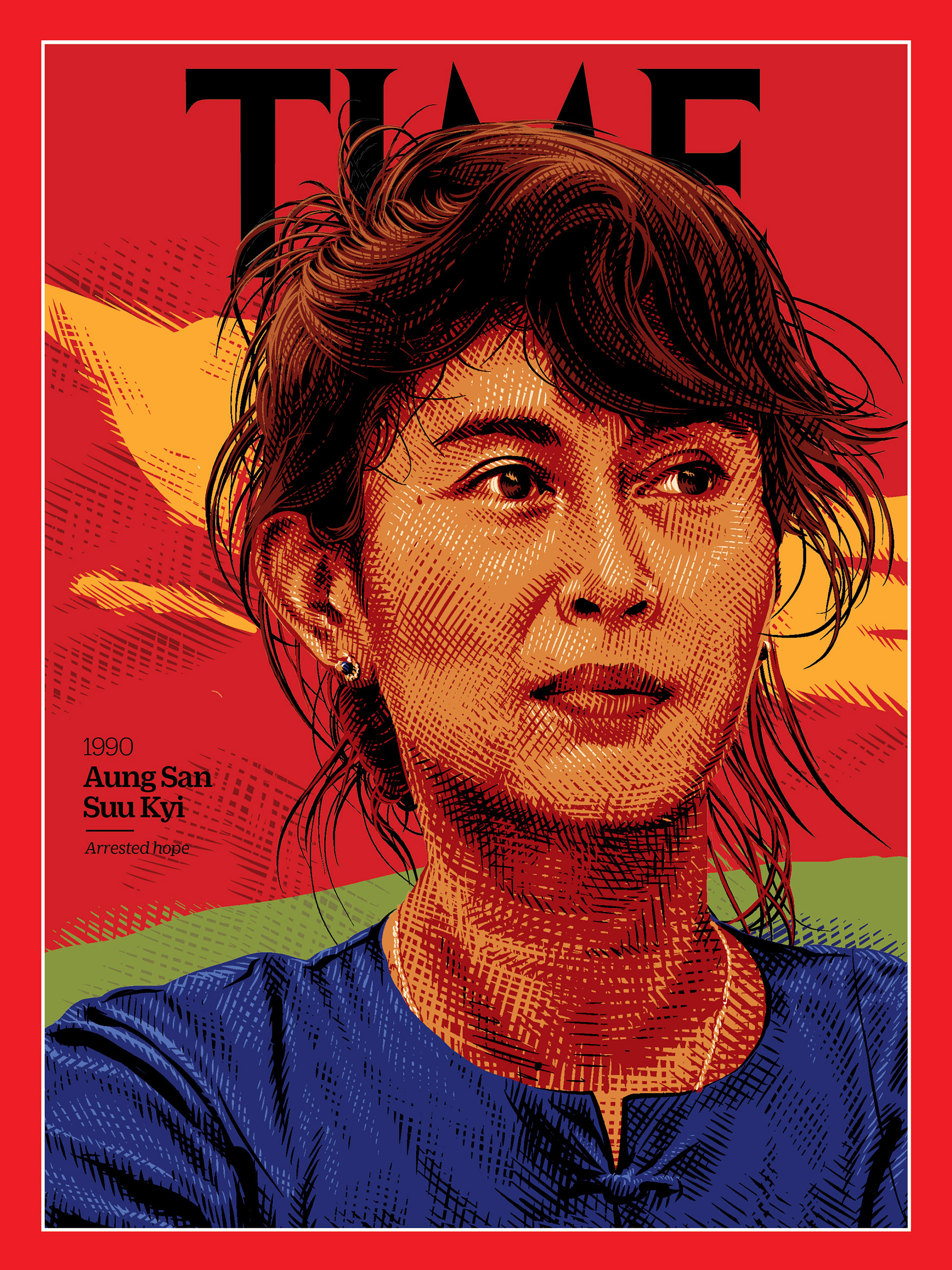A revolutionary spirit engulfed Myanmar in the summer of 1988. The daughter of Aung San, the country’s independence hero, caught the fever. Aung San Suu Kyi joined the opposition, lending her status as political royalty to the fight against the military dictatorship. The uprising ended in bloodshed; the military killed thousands and put the upstart National League for Democracy (NLD) activists in prison or, in Aung San Suu Kyi’s case, under house arrest. But her fight for democracy persisted. In 1990, the NLD won a landslide in an election swiftly invalidated by the junta. It would be another 22 years, 15 of them spent in confinement, before Aung San Suu Kyi could claim a seat in parliament.
Then in 2015, Myanmar’s first civilian government in more than half a century took power with Aung San Suu Kyi at the helm. She became the de facto head of state in the newly crafted role of state counselor. But the Nobel Peace Prize laureate soon disappointed her supporters abroad when her Administration, which still shares power with the military, defended the army’s brutal campaign against the Rohingya Muslim minority. In December 2019, Aung San Suu Kyi personally traveled to the International Court of Justice at The Hague to deny allegations of genocide. Her rejection of the claims delighted her domestic base, but further cemented her descent from democratic icon to international pariah. —Laignee Barron
This article is part of 100 Women of the Year, TIME’s list of the most influential women of the past century. Read more about the project, explore the 100 covers and sign up for our Inside TIME newsletter for more.
